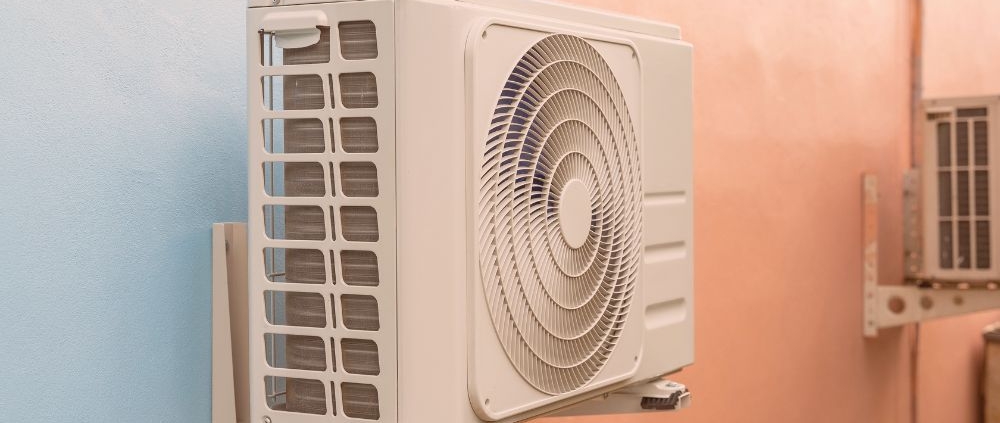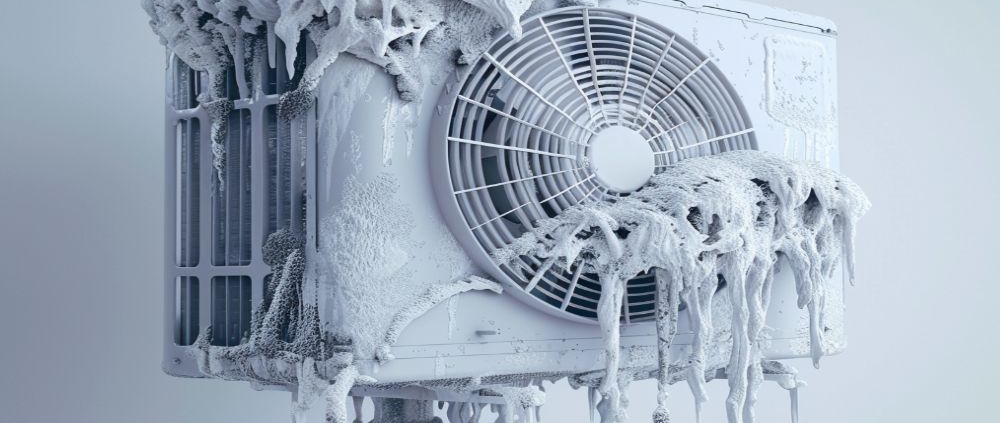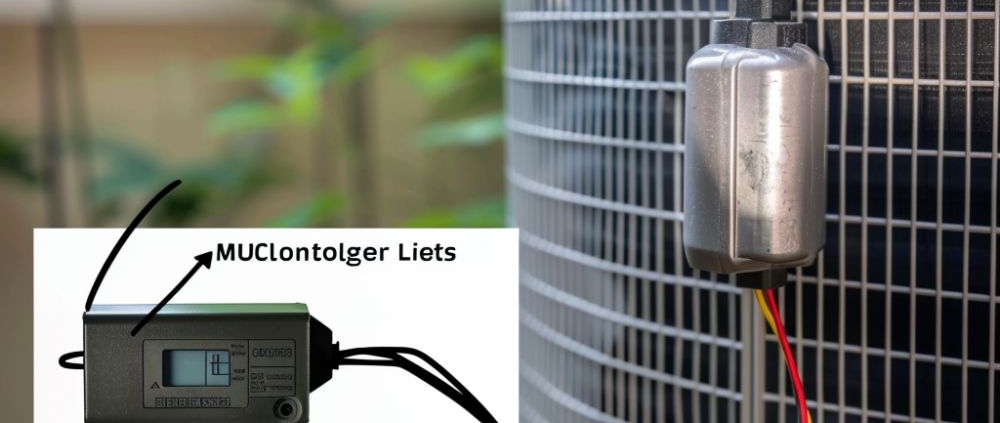What is an AC Tune-Up, and Why is it Essential for Your Cooling System?
An air conditioning (AC) tune-up is a vital maintenance task that ensures your cooling system functions efficiently, providing comfort during the hot summer months. Regular tune-ups are crucial to keep your AC unit in optimal condition and prevent costly breakdowns. Let’s delve deeper into what an AC tune-up entails and why it’s essential for the longevity of your cooling system.
Signs Your AC Needs a Tune-Up
Before discussing the importance of AC tune-ups, let’s identify some common signs indicating that your AC requires maintenance:
Reduced Cooling Efficiency
If your AC isn’t cooling your home as effectively as before, it might be due to clogged filters or refrigerant leaks, indicating the need for a tune-up.
Strange Noises
Unusual sounds from your AC unit, such as grinding or squealing noises, could indicate worn-out components that need attention during a tune-up.
Frequent Breakdowns
Experiencing frequent breakdowns or malfunctions with your AC suggests underlying issues that a professional technician can address during a thorough tune-up.
Benefits of AC Tune-Up
Regular AC tune-ups offer several benefits that contribute to the efficient operation and longevity of your cooling system:
- Improved Energy Efficiency: A well-maintained AC unit consumes less energy, lowering utility bills.
- Extended Lifespan of the Unit: Routine maintenance helps prevent premature wear and tear, prolonging the life of your AC system.
- Enhanced Indoor Air Quality: Cleaning and servicing components like filters and coils during a tune-up promote better indoor air quality by removing dust, debris, and allergens.
What to Expect During an AC Tune-Up
During an AC tune-up, a certified technician will perform a series of tasks to ensure your cooling system operates smoothly:
- Inspection of Components: The technician will examine various components, including the evaporator and condenser coils, to detect any issues or signs of wear.
- Cleaning and Lubrication: Cleaning dirty coils, lubricating moving parts, and clearing clogged drains are essential maintenance tasks during a tune-up.
- Testing for Performance: The technician will test the system’s performance, including airflow, refrigerant levels, and thermostat calibration, to ensure optimal operation.
DIY vs. Professional AC Tune-Up
While some homeowners may attempt to perform DIY AC maintenance tasks, hiring a professional technician for a comprehensive tune-up offers several advantages:
- Expertise and Experience: Certified technicians have the knowledge and experience to efficiently identify and address potential issues.
- Safety Considerations: Working with electrical components and refrigerants can be hazardous, making professional tune-ups safer and more reliable.
Frequency of AC Tune-Up
Experts recommend scheduling an AC tune-up at least once a year to maintain optimal performance. However, certain factors, such as the age of the unit and usage patterns, may necessitate more frequent maintenance.
Cost of AC Tune-Up
The cost of an AC tune-up varies depending on factors such as the size of the unit, its condition, and additional services required. On average, a tune-up can range from $75 to $200. Investing in regular maintenance can ultimately save you money by preventing costly repairs and prolonging the lifespan of your AC system.
Conclusion
Regular AC tune-ups are essential for maintaining your cooling system’s efficiency, performance, and longevity. By addressing issues proactively and ensuring proper maintenance, you can enjoy optimal comfort and lower energy bills while extending the lifespan of your AC unit.
FAQs
- How often should I schedule an AC tune-up?
- It’s recommended that an AC tune-up be scheduled annually to ensure optimal performance.
- Can I perform an AC tune-up myself?
- While some maintenance tasks can be DIY, hiring a professional technician ensures thorough inspection and servicing of your AC system.
- What factors influence the cost of an AC tune-up?
- The size of the unit, its condition, and the additional services required can affect the cost of a tune-up.
- Is an AC tune-up necessary if my unit is still under warranty?
- Yes, regular maintenance is essential to keep your warranty valid and ensure the longevity of your cooling system.
- What are the consequences of neglecting AC maintenance?
- Neglecting AC maintenance can lead to reduced efficiency, frequent breakdowns, and premature component failure, resulting in costly repairs.
How to Unfreeze Your AC: A Comprehensive Guide
Is your air conditioner not keeping your home cool during the scorching summer months? One of the most frustrating issues homeowners face is when their AC unit freezes up, leaving them sweating in discomfort. However, before you panic and call for expensive repairs, there are several steps you can take to unfreeze your AC and prevent it from happening again.
Introduction to AC Freezing Issues
AC freezing occurs when moisture in the air freezes on the evaporator coils of your air conditioning unit, obstructing airflow and hindering its ability to cool your home effectively. This can happen for various reasons, including restricted airflow, low refrigerant levels, or even thermostat malfunctions.
Checking for Obstructions
The first step in unfreezing your AC is to check for any obstructions that impede airflow. Start by inspecting your air filters. Clogged or dirty filters can restrict airflow, causing the evaporator coils to freeze. Replace or clean the filters if necessary.
Additionally, check for blocked vents around your home. Furniture, curtains, or other objects may obstruct airflow, preventing your AC from circulating cool air effectively.
Refrigerant Levels Inspection
Proper refrigerant levels are crucial for the efficient operation of your air conditioner. Low refrigerant levels can cause the evaporator coils to freeze up. Signs of low refrigerant levels include reduced cooling capacity and ice buildup on the coils. If you suspect low refrigerant levels, contact a professional HVAC technician to inspect and recharge your system.
Evaporator Coil Examination
The evaporator coil plays a vital role in the cooling process by absorbing heat from the air. Over time, the coil can become dirty or clogged, reducing its efficiency and causing it to freeze. Regularly clean the evaporator coil using a soft brush and mild detergent to prevent this. Ensure the coil is completely dry before turning the AC back on.
Thermostat Calibration
An inaccurate thermostat can cause your AC to run longer than necessary, leading to freezing issues. Calibrate your thermostat to ensure it accurately reflects the temperature in your home. Use a separate thermometer to compare the readings and adjust the thermostat as needed.
Condenser Unit Maintenance
The condenser unit outside your home plays a crucial role in dissipating heat from the refrigerant. To ensure proper airflow, keep the area around the condenser unit clear of debris, such as leaves, dirt, or grass clippings. Additionally, hose down the unit periodically to remove any buildup.
Professional Inspection and Repair
If your AC continues to freeze despite taking these steps, it may be time to call a professional HVAC technician. They can thoroughly inspect your system, identify any underlying issues, and make the necessary repairs. Regular maintenance by a qualified technician can also help prevent future freezing problems.
Conclusion
Dealing with a frozen AC can be frustrating, but by following these steps, you can unfreeze your unit and restore comfort to your home. Regularly maintain your air conditioning system to prevent future issues and ensure optimal performance.
FAQs
1. How do I know if my AC is frozen?
- Look for signs such as reduced airflow, ice buildup on the coils, or water leaks around the unit.
2. Can I unfreeze my AC myself?
- You can try troubleshooting steps such as checking for obstructions and cleaning the evaporator coil. However, if the issue persists, seeking professional help is best.
3. How often should I clean my AC filters?
- It’s recommended to clean or replace your AC filters every 1-3 months, depending on usage and environmental factors.
4. What causes low refrigerant levels in an AC?
- Low refrigerant levels can be caused by leaks in the system or improper installation.
5. Is regular AC maintenance necessary?
- Yes, regular maintenance helps ensure the efficient operation of your AC system and can prevent costly repairs in the future.
How to Tell If AC Fuse Is Blown
AC fuses play a crucial role in the smooth functioning of your air conditioning system. They act as protective devices, preventing electrical overloads and short circuits. However, like any other component, AC fuses can sometimes fail, causing disruptions in your cooling system. This article explores the signs of a blown AC fuse, how to diagnose the issue, steps to replace the fuse, preventive measures, and when to seek professional help.
Introduction to AC Fuses
Before identifying a blown AC fuse, let’s understand its significance. AC fuses are miniature yet vital components of your air conditioning unit. They are designed to break the circuit when excess current flows through them, thus protecting the system from damage due to electrical faults. AC fuses are a safety mechanism, preventing overheating and potential fires.
Common Signs of a Blown AC Fuse
Recognizing the symptoms of a blown AC fuse is essential for prompt resolution. Here are some common indicators to watch out for:
No Cool Air Coming from the AC
One of the most apparent signs of a blown fuse is a lack of cool air emanating from your air conditioning vents. A blown fuse could be the culprit if your AC is running but not producing cold air.
AC Unit Not Turning On
If your air conditioner fails to turn on, it could be due to a blown fuse. When the fuse is blown, the circuit breaks, preventing power from reaching the AC unit.
Tripped Circuit Breaker
A tripped circuit breaker is another indicator of a potential blown fuse. If the breaker associated with your air conditioning system keeps tripping, it may indicate an underlying electrical issue, such as a blown fuse.
Burning Smell from the Air Conditioner
A burning smell emanating from your air conditioner could signal a blown fuse. Electrical components overheating due to excessive current flow can emit a distinct burning odor.
How to Diagnose a Blown AC Fuse
If you suspect that your AC fuse has blown, follow these steps to diagnose the issue:
Checking the Circuit Breaker
Start by inspecting the circuit breaker associated with your air conditioning system. If the breaker is tripped, reset it and observe if the AC unit turns on. If the breaker continues to trip, it may indicate a blown fuse or a more significant electrical problem.
Inspecting the Fuse Box
Locate the fuse box or panel containing the fuses for your air conditioner. Open the panel and visually inspect the fuses for any signs of damage, such as discoloration or a broken filament.
Testing the Fuse with a Multimeter
To confirm whether a fuse is blown, you can use a multimeter, a handy tool for measuring electrical voltage, current, and resistance. Set the multimeter to the resistance or continuity setting and touch the probes to both fuse ends. The fuse is likely blown if the multimeter reads infinite resistance or no continuity.
Steps to Replace a Blown AC Fuse
Once you’ve confirmed that a fuse is blown, follow these steps to replace it:
Gathering Necessary Tools and Materials
Before replacing the fuse, ensure you have the required tools and materials, including a replacement fuse of the same amperage rating as the original.
Locating the AC Fuse
Refer to your air conditioning unit’s manual or consult a professional to locate the position of the AC fuse. Typically, fuses are located in the outdoor unit or the indoor air handler.
Removing the Blown Fuse Safely
Carefully remove the blown fuse from its socket using fuse pullers or insulated gloves to avoid electrical shocks.
Installing a New Fuse Correctly
Please insert the new fuse into the socket to ensure it is securely in place. Avoid touching the metal parts of the fuse to prevent any damage.
Preventive Measures to Avoid Blown AC Fuses
While occasional fuse failures may occur, you can take preventive measures to minimize the risk:
- Regular Maintenance of the Air Conditioning System: Schedule routine maintenance checks to ensure all components of your AC system are in optimal condition.
- Keeping the Condenser Unit Clean: To prevent airflow restrictions and overheating, keep the outdoor condenser unit free from debris, such as leaves and dirt.
- Monitoring the Electrical Connections: Periodically inspect the electrical connections of your air conditioning system for any signs of wear or corrosion, and address any issues promptly.
When to Seek Professional Help
While replacing a blown AC fuse can be a straightforward task, certain situations may warrant professional intervention:
- Complex Electrical Issues: If you encounter complex electrical problems beyond simply replacing a fuse, it’s best to seek assistance from a qualified HVAC technician.
- Continuous Blowing of Fuses: If your AC fuses repeatedly blow, it could indicate underlying issues with your electrical system or air conditioning unit that require expert diagnosis.
- Safety Concerns: If you’re uncertain about handling electrical components or have safety concerns, it’s safer to enlist the help of a professional.
Conclusion
Identifying and addressing a blown AC fuse is essential for maintaining the efficiency and longevity of your air conditioning system. By understanding the common signs, diagnosing the issue, and following the necessary steps to replace the fuse, you can ensure your AC keeps you cool during hot weather. Remember to prioritize safety and seek professional assistance when needed.
FAQs
- Can I replace an AC fuse myself?
- Yes, replacing a blown AC fuse is typically a straightforward task. However, if you’re uncomfortable handling electrical components or encounter complications, it’s best to seek professional help.
- What causes AC fuses to blow?
- AC fuses can blow for various reasons, including electrical overloads, short circuits, and age-related wear and tear.
- How often should I check my AC fuses?
- Inspecting your AC fuses as part of regular maintenance checks or when you encounter cooling issues with your air conditioning system is a good practice.
- What should I do if my AC fuse keeps blowing?
- If your AC fuse repeatedly blows, it may indicate an underlying electrical issue or a malfunctioning component within your air conditioning system. In such cases, it’s advisable to consult a professional HVAC technician for diagnosis and repair.
- Can I use a higher amp fuse for my AC unit?
- No, using a fuse with the same amp rating as the original is crucial. A higher amp fuse can pose safety hazards and potentially damage your air conditioning system.




